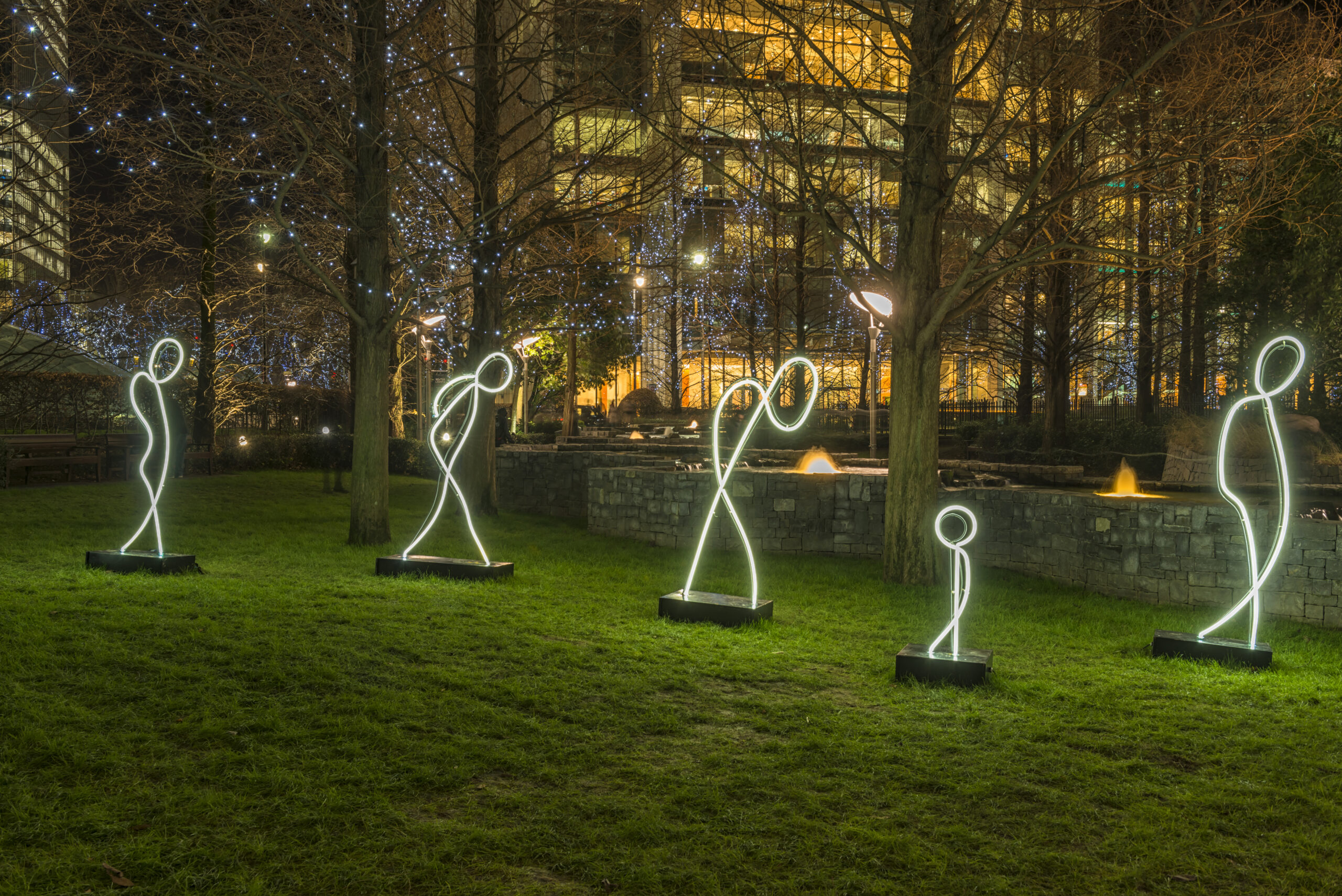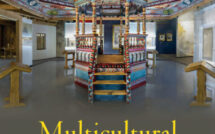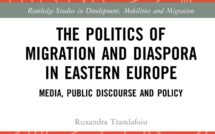

In some sense, the narrative of leaving home produces too many homes and hence no Home, too many places in which memories attach themselves through carving out of inhabitable space, and hence no place in which memory can allow the past to reach the present (in which “I” could declare itself as having come home). Sara Ahmed, 1999.
What does it mean to belong to a place? What must people have in common to belong together? What is the relationship between being at home and being a citizen? Who is excluded from frames of citizenship and nationhood? Or, as Hannah Arendt would have asked, “who has the right to have rights?” These are the kinds of questions that inspire and undergird the course, Migration, Identity and Belonging, which I (Özge Savaş) teach as a small upper-level seminar. When I decided to teach this iteration of the course with some adjustments in the fall of 2022, one impetus was to use the course as a vehicle to connect the students at Bennington College with local organizations that serve migrants, asylum seekers, and refugees in the area, and engage in activism and advocacy on migrants’ behalf and with them. After all, if we were going to discuss the meanings attached to home, we needed to tend to our current home with all its uncertainties, temporalities, and the possibilities it might hold for permanency.
In this essay, we—Özge Savaş, social psychology faculty at Bennington College, and Lara Solis, a sophomore at the time of the class—reflect on our experiences being in this class together and share the syllabus and some of the course outcomes. We discuss how we co-created a learning environment with the intentions of building a community and democratizing knowledge. We also share how we collaborated as a class for the final project, which was to create a podcast that weaved together research, storytelling, and policy.
Sara Ahmed’s (1999) text, Home and away: Narratives of migration and estrangement, played a central role in how we conceptualized belonging. Ahmed explains that the idea of home as a fixed place is based in the idealized images of “home as a purified space of belonging” (339), where one feels safe and comfortable and moves with ease. This idealized image of home constructs the opposite of home—being away from home or leaving home—as opening oneself up to “dangers,” encountering with “strangers,” and/or becoming a stranger. The danger of such narratives of home as a fixed place and its opposite as loss of identity and memory is that they occlude the ability to see the generative possibilities for new identities in the making. Sara Ahmed borrows the notion of “diasporic space” from Avtar Brah and offers a definition of home as a diasporic space to enable an understanding of these new possibilities: “home can mean where one usually lives, or it can mean where one’s family lives, or it can mean one’s native country” (338). For some people, where they usually live is also where their family lives and is also their native country. When the co-existence of these three registers has never been broken, the questions of belonging are less likely to be asked. In a way, “leaving home” becomes a critical moment for beginning to ask “where one’s home is” and “where one belongs.” For those for whom the three registers are different and geographically distant from each other, the questions of belonging become more salient.
This class was made up of nine students, six of whom were either second generation immigrants, international students, or third-culture-kids, and the remaining three had been exposed to stories of migration otherwise (e.g., through a family member sponsoring or hosting a refugee). Thus, the co-existence of the three registers had been broken for the majority of us—including the instructor—in the classroom. This was a remarkable group in terms of the possibilities it offered for where the discussions could go and what was imaginable as an outcome. However, I (Özge Savaş) noticed early on that the class could also become boring and turn into an echo chamber where almost everyone agreed on the most progressive agendas about migration and integration policies. As the professor, it was my job to get the students out of their comfort zone. After all, there is an uncharted stretch zone between the comfort zone and the danger zone, where true learning happens.
When everyone in the classroom agrees on the most progressive agendas, either someone has to play the devil’s advocate or we need creativity to bring in rhetoric with which we disagree. Thus, I invited students to stage a debate in the class on the second week of the semester. The question of the debate was “should the next US Census include a citizenship question or not?” In the first half of our time together, we studied the history of the US Census, among other things, and examined how the questions about race/ethnicity changed over the last decades (not always in a linear fashion). Later, the students were randomly assigned to two groups. The group in favor of the argument (yes, the census should include a citizenship question) was given a six-page long report on the issue that had been produced by a think tank defining itself as non-partisan and pro-immigrant. The group against the argument (no, the census should not include a citizenship question) was given a report of similar length produced by a think tank that defines itself as non-partisan, whose mission is to improve immigration and integration policies. After the two groups studied their assigned reports and conducted external research, they came on the “stage” to animate the debate. Since the class was small, everybody had a specific role in the debate, and every member of the class delivered remarks. My (Özge Savaş) observation is that in general students do not like debates because they feel frustrated when they are not assigned to be on the “right” side of the debate, and they often cannot embody the assigned role if their personal opinion clashes with it. Our class’s experience differed from this pattern. In fact, the debate became a landmark experience that brought the students together and helped build community and trust among students, because they learned to enjoy such polarized conversations.
After the debate, the classroom continued to be a place to which we all eagerly came back every week. In fact, the debate brought students closer to each other because it taught them precisely why they agreed on certain issues and what was the exact nature of the issues on which they disagreed. They also understood better how to examine specific topics systematically to build arguments. Thus, unexpectedly, the debate created a solid foundation for collaboration for the final podcast project.
The podcast project met many obstacles along the way that required us to solve problems and conflicts as they arose, cultivate a true spirit of teamwork and collaboration, and learn to lean onto each other’s strengths while also learning to acknowledge our personal weaknesses and strengths in terms of our respective skill sets. All problems were democratically solved with the help of all the members of the class and the instructor via open conversation and transparent decision making. Tasks for the making of the podcast were distributed based on each person’s strengths, skills, and interests, as well as according to the abilities participants wanted to improve in themselves.
Students’ time management skills were key throughout the project. The classroom was organized around many moving parts, so that coordinating the multiple contributors and researchers was a central task. Although the class occasionally encountered disagreements amongst co-researchers about how to approach certain topics, the best rewards came when we were able to resolve minor conflicts through research and collaboration, until we finally produced an educational tool that could inspire others. The class allowed students to engage with a vast amount of interdisciplinary literature about migration and to develop an understanding about how this literature relates to migrants’ identities and processes of integration in new locations. Students adopted Sunil Bhatia’s decolonial psychological framework and Gloria Anzaldúa’s writings on borderlands, while also meeting key figures active in migration issues in New England. Consistently incorporating theory in their activities and connecting with real people while doing on-the-ground work—or in some cases meeting immigrants directly—allowed students to develop a critical eye in analyzing migration in their state of residence. The podcast—the final project in the class—was born out of a convergence: utilizing primarily psychological frameworks to understand and explain to others what the current reality was for migrants and possibly positively impact others in the community.
Students had many critical conversations along the way about how to honor the stories they had recorded. These stories were those of people working with or on behalf of migrants, including organizers, volunteers, and paid workers, but also included the stories of migrants themselves, some of whom had experienced perilous journeys. In making the podcast, students had extensive discussions about the purpose of the stories and the intended audience. In particular, they wondered when stories become extractive. They did not want the podcast to showcase only a narrative of trauma or merely contain snippets of unrelatable facts. One student, whose personal life was the most far removed from the experience of migration commented, “I do not want this to turn into yet another podcast my white family consumes on a road trip in their Subaru.” This vivid remark came about as the class was attempting to define the podcast’s intended audience. However, the class noted that the audience is not something that can be controlled. In fact, audiences choose whether to listen to a podcast. An important outcome of the project is that the students practiced asking critical questions and engaged with the creation process thoughtfully and intentionally.
Course description and objectives
What is the difference between refugees, asylum-seekers, and immigrants? How do different institutions and systems define them? What are the reasons for which people migrate? What creates the conditions for illegality? Why are people deported? What does integration mean, and who is integrated? In this course, we follow a migrant-centered approach in investigating macro (e.g., institutional), meso (e.g., intergroup), and micro-level (e.g., individual) influences on migration, displacement, and belonging. We explore the scientific, conceptual, and policy-oriented foundations of a migrant-centered study of immigration in the US and across the globe. This course (1) bridges scholarship in psychology with contemporary immigration debates, (2) encourages students to think about the relationship between immigration policy and psychological research on race, ethnicity, and identity, and (3) helps students engage in interdisciplinary and critical thinking on issues related to immigration. The course follows a seminar format, with small group discussions, close-readings, and group activities as the dominant forms of interaction in the class. In order to familiarize students with key questions, theoretical debates, and issues within the field, readings are drawn from a wide range of interdisciplinary and critical scholarship and include elements from digital media and pop culture.
Learning goals
- Develop media literacy about issues related to race, ethnicity, gender, migration, and electoral politics, and be able to evaluate news delivered through the media.
- Compare and contrast different theories and frameworks about multiculturalism and critique each as they relate to people’s everyday lives.
- Explain and exemplify the relationship between history of immigration in the US, immigration policy and demographic flows, and attitudes towards immigrants.
- Identify and debunk the myths and stereotypes about different immigrant groups and racial/ethnic minorities.
- Apply psychosocial and sociocultural theories and frameworks in discussing solutions about displacement, human rights violations, and protracted intergroup conflict.
- Develop skills for intergroup dialogue.
Course schedule
Week 1: Introductions
No assigned material.
Week 2: Identity, citizenship, nation
Read:
Omi, M. & Winant, H. (2014) Introduction: Racial Formation in the United States. (pp. 1-18). Racial Formation in the United States: From the 1960s to the 1990s (Third Edition). NY: Routledge.
Jacobson, M.F. (1999). Introduction: The Fabrication of Race. (pp. 3-13). Whiteness of a Different Color: European Immigrants and the Alchemy of Race. Harvard University Press.
Hopkins, N. & Blackwood, L. (2011). Everyday citizenship: Identity and recognition. Journal of Community & Applied Social Psychology, 21, 215-227. doi: 10.1002/casp.1088
Listen:
”The Stakes for the 2020 Census with Michael Omi and Stephen Menendian.” Episode of “Who Belongs “Podcast.
Week 3: Gender in/and/as borderlands
Read:
Anzaldúa, G. (2012). The Homeland, Atzlán. (pp. 23-35). Borderlands. La Frontera: The New Mestiza (4th Edition). San Franscisco: Aunt Lute Books.
Anzaldúa, G. (2012). Movimientos de rebeldía y las culturas que traicionan [Movements of Rebellion and Cultures that Betray] (pp. 37-45). Borderlands. La Frontera: The New Mestiza (4th Edition). San Franscisco: Aunt Lute Books.
Espin, O. (1999). Migration, Sexuality and the Preservation of Culture and Tradition.(pp.123-132). Women crossing boundaries: A Psychology of immigration and transformations of sexuality. NY: Routledge.
Listen:
“The Moving Border: Part One, The North.” Episode of Latino USA Podcast
CW: This episode includes mentions of sexual violence.
“Lost in Translation.” Episode of NPR’s Codeswitch.
Week 4: Refuge
Read:
Ahmed, S. (1999). Home and Away: Narratives of Migration and Estrangement. International Journal of Cultural Studies, p.329-347.
Brun, C. & Fabos, A. (2015) Making homes in Limbo? A conceptual framework. Refuge, 31(1), p.5-15
Week 5: Asylum
Read:
Holmes, S.M. (2013). “How the Poor Suffer” Embodying the Violence Continuum. (pp. 88-110). Fresh Fruit, Broken Bodies: Migrant Farmworkers in the United States. Berkeley: University of California Press.
Listen:
“Children of Smithfield.” Episode of Latino USA Podcast
CW: This episode includes mentions of violence.
Week 6: Colonial self and internalized oppression
Read:
Fanon, F. (1963). Colonial War and Mental Disorders. (pp.181-199). The Wretched of the Earth. NY: Grove Press.
CW: This chapter includes mentions and analyses of sexual violence.
Moane, G. (2004). Hierarchical systems: Patriarchy and Colonialism. (pp.27-56). Gender and Colonialism: A Psychological Analysis of Oppression and Liberation. NY: Palgrave Macmillan.
CW: This chapter includes mentions and analyses of sexual violence.
Bhatia, S. (2020). Decolonizing psychology: Power, citizenship and identity. Psychoanalysis, self, & context, 15(3). 257-266.
Week 7: Language justice and mono/bi/multilingualism
Read:
Fanon, F. (1952). The Black man and language. (pp.1-23). Black skin, white masks. NY: Grove Press.
Koven, M. (1998). Two Languages in the Self /The self in two languages: French-Portuguese bilinguals’ verbal enactments and experiences of self in narrative discourse. Ethos, 26(4), pp. 410-455.
Optional read:
Espin, O. (1999). Language, identity, silence & sexuality. (pp. 133-144). Women crossing boundaries: A Psychology of immigration and transformations of sexuality. NY: Routledge.
Week 8: Neoliberalism, entrepreneurial self, and the model minority myth
Read:
Adams, G. et al., (2019) The psychology of neoliberalism and the neoliberalism of psychology. Journal of Social Issues, 75(1), p.1-28.
Mahalingam, R. (2013). Model minority myth: Engendering cultural psychology of Asian immigrants. In E. L. Grigorenko (Ed.), U.S. immigration and education: Cultural and policy issues across the lifespan (pp. 119–136). Springer Publishing Company.
Richeson, J. & Craig, M (2017) Intra-minority intergroup relations in the twenty-first century, Daedaulus, 140 (2), 166-175.
Week 9: Deservingness, stigma, and moral exclusion
Read:
Yoo, G. (2008). Immigrants and Welfare: Policy constructions of deservingness. Journal of Immigrant and Refugee Studies, 6(4),490-507, doi: 10.1080/15362940802479920.
Opotow, S. (1990). Moral Exclusion and Injustice: An Introduction. Journal of Social Issues, 46(1), 1-20.
Week 10: The state of things?
Read:
Vanderbeck, R. M. (2006). Vermont and the imaginative geographies of American whiteness. Annals of the Association of American Geographers, 96(3), 641-659.
Bose, P. (2015) “New Vermonters” and Perspectives. The Northeastern Geographer, 7, 45-57.
Listen:
“Why is Vermont so overwhelmingly White?” Episode of Brave Little State.
Week 11-13: Workshop
Research and readings chosen by students to complement the research for the podcast project.
Workshopping the podcast scripts and episodes in class.
The podcast produced by the students in this course is available here.
Özge Savaş is a critical social psychologist, who received her PhD in psychology and women’s and gender studies from the University of Michigan. Savaş has been a faculty member at Bennington College since 2020. She works with historically and systemically disadvantaged and marginalized individuals and communities, combining decolonial and intersectional feminist theories in explaining how systems of oppression are maintained. Her research has significant social policy implications and applicability in addressing issues ranging from immigrant rights and humanitarian crises to the widening cultural/political divide and global gender inequality.
Lara Solis is an undergraduate psychology student at Bennington College who graduate in the fall of 2024. Her work focuses on qualitative and collaborative research with Latin American immigrants, as they explore avenues for community building. After graduation she will be returning to Costa Rica to continue her research at the graduate level.
Image: Shutterstock | Silhouettes of refugees fleeing the Syrian conflict by Alaa Minawi.
Published on April 15, 2024.




